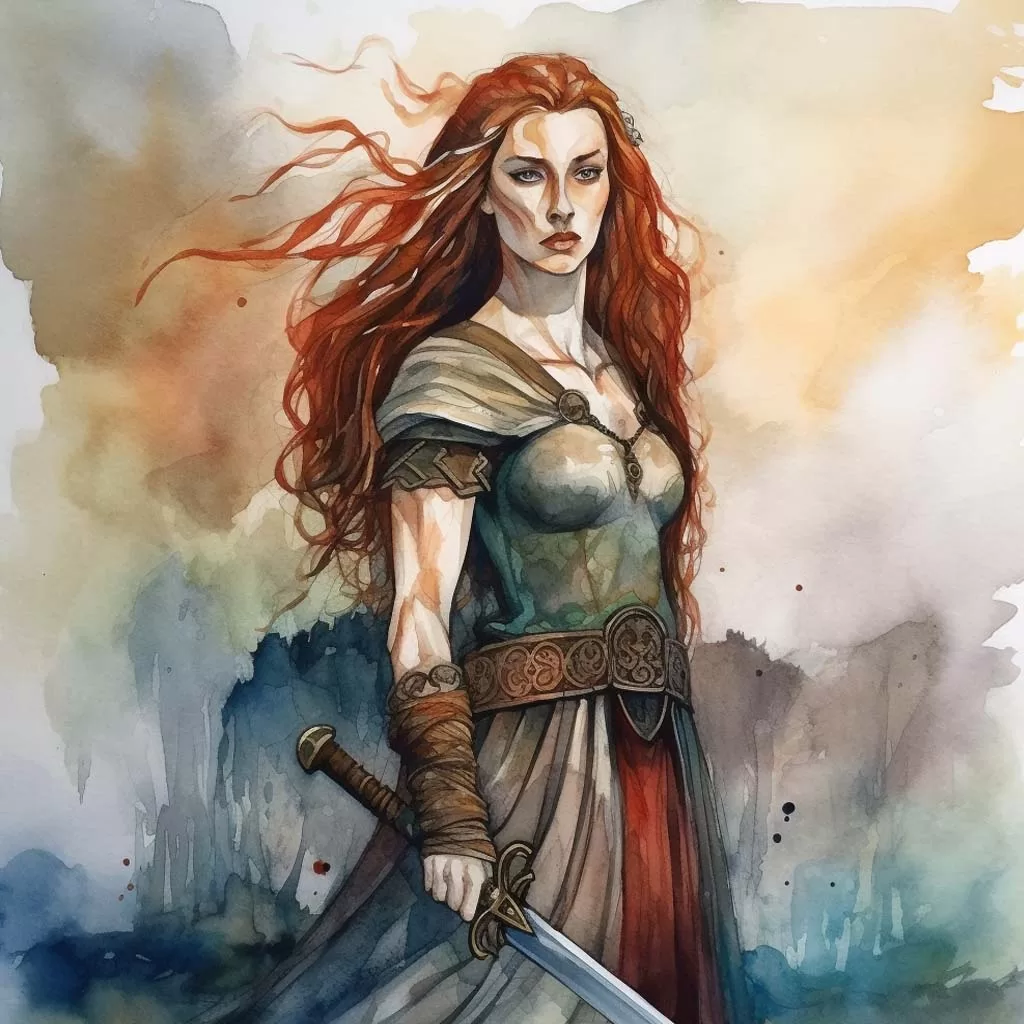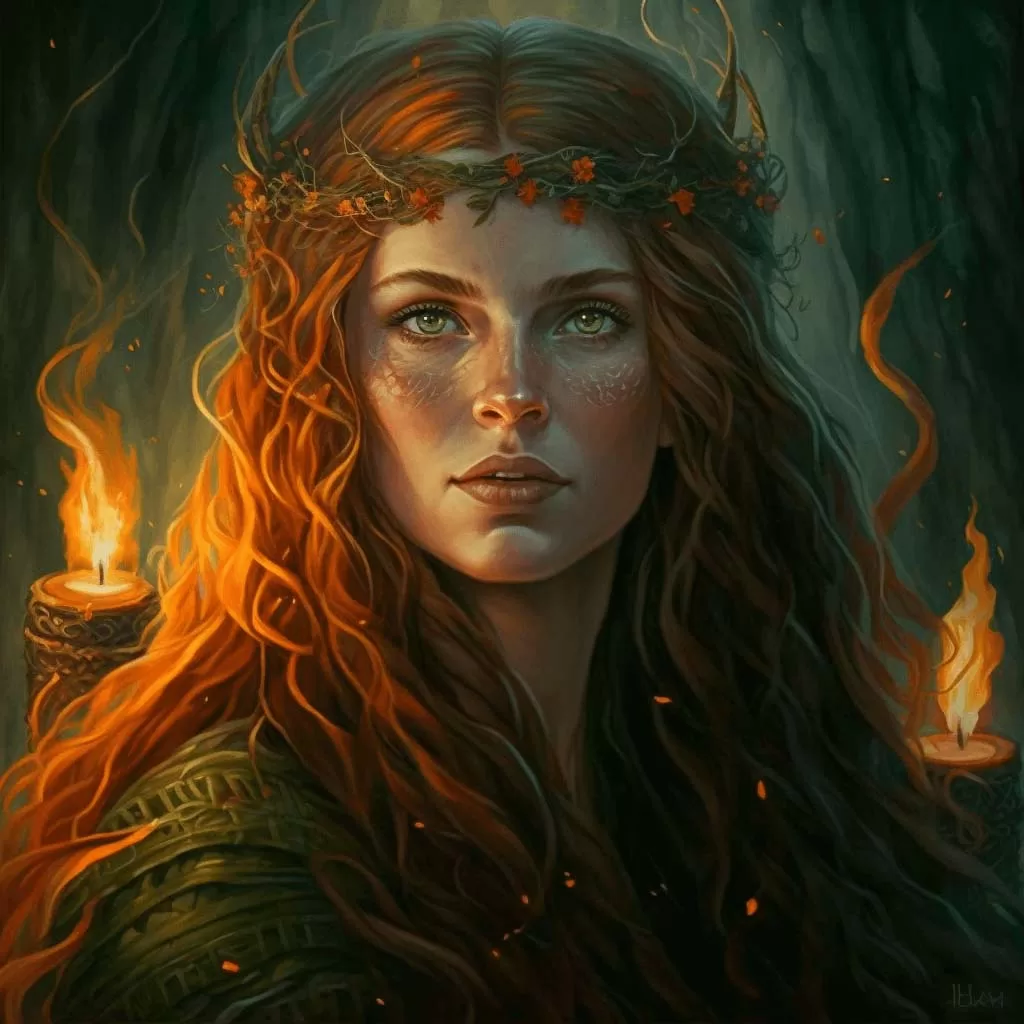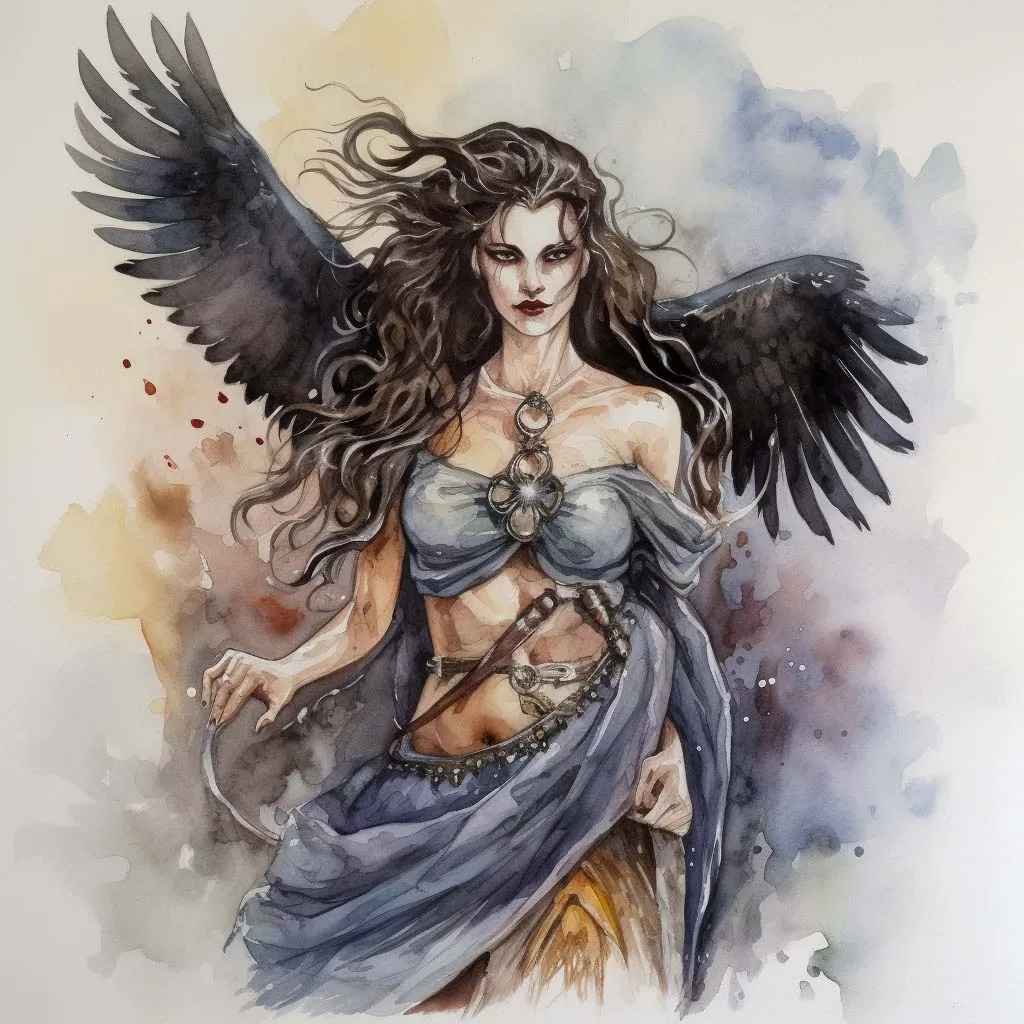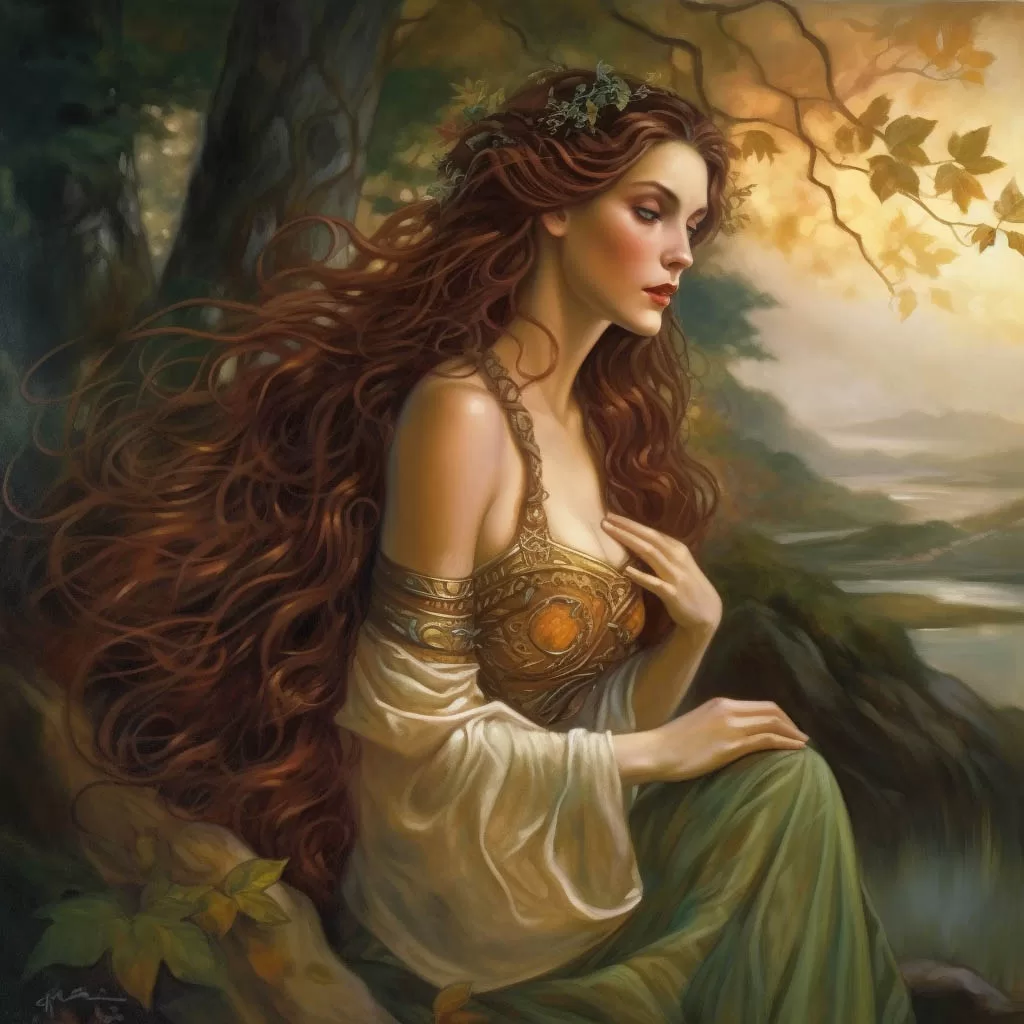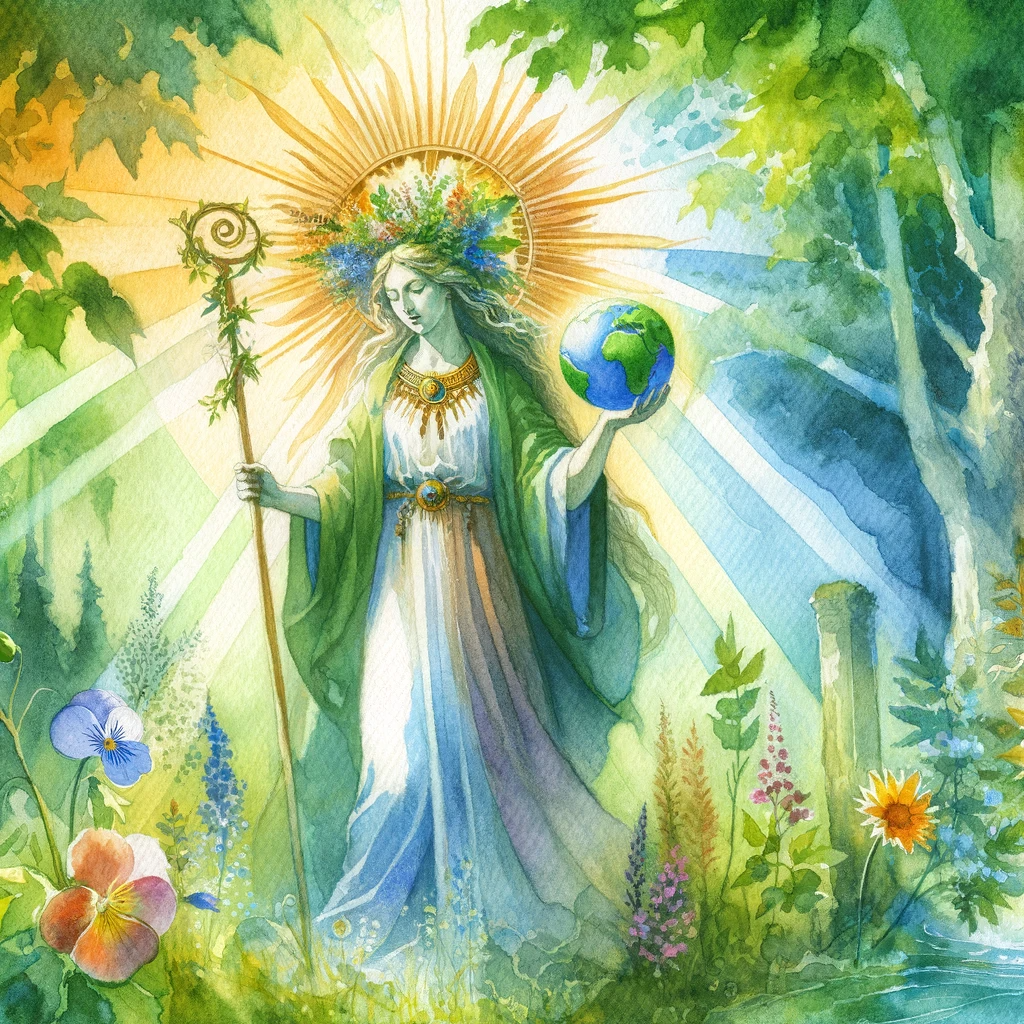Macha is a complex deity from Celtic mythology, embodying aspects of war, sovereignty, and fertility. She is one of the more enigmatic figures within the Irish pantheon, often associated with the land and its power, as well as with horses, a symbol of vitality and prosperity in ancient Celtic societies.
Kinship | Sovereignty | Rituals | Legacy
Her narratives are found within the Ulster Cycle, one of the four great cycles that comprise the bulk of early Irish literature. These stories provide insights into the values, struggles, and daily lives of the Celtic people. Macha’s presence within these tales highlights her importance and the multifaceted roles she played in ancient Irish society and mythology.
Mythological Accounts
Macha and the Kingship of Ulster
In one of her most famous legends, Macha is linked to the kingship of Ulster. She marries an Ulster farmer named Crunnchu and, in return for her love and companionship, demands that her presence be kept a secret. However, Crunnchu boasts about his wife’s speed, likening it to that of a horse. This leads to a challenge where Macha is forced to race against the king’s horses while heavily pregnant. She wins the race but gives birth immediately after, cursing the men of Ulster to suffer the pains of childbirth in their hour of greatest need.
This story highlights Macha’s dual nature as both nurturing and vengeful. It also underscores her deep connection to the land and sovereignty, as her actions directly influence the fate of Ulster’s kingship and warriors. Her curse, known as the “Pains of Macha“, reveals her power to affect both prosperity and ruin, underscoring the respect and fear she commanded.
Macha as a Sovereignty Goddess
Macha’s role as a sovereignty goddess is evident in her association with the land, fertility, and the well-being of the community. She is often depicted as a figure who must be appeased or honored to ensure the prosperity of the land and its people. Her connection to horses, animals that were highly valued by the Celts for their economic and military importance, further cements her status as a deity of prosperity and power.
Her tales often involve themes of rightful kingship and the balance between human and divine forces. Macha’s presence in these stories serves as a reminder of the sacred pact between the people and the land, with the goddess acting as both benefactor and protector. Her ability to bestow or withhold fertility symbolizes the ancient belief in the divine right of kings and the land’s integral role in the health and success of the kingdom.
Worship and Cult
Rituals and Sacred Sites
Evidence of Macha’s worship is found in various archaeological sites across Ireland, including Emain Macha (Navan Fort), which is believed to have been a major ceremonial site dedicated to the goddess. This site, along with others, suggests that Macha was honored with rituals that celebrated fertility, sovereignty, and the cycles of life and death. These ceremonies likely involved offerings, feasting, and perhaps even horse races or competitions to honor her connection to these noble animals.
The importance of Emain Macha and similar sites underscores the role of sacred spaces in Celtic spirituality. These places were not just physical locations but were seen as portals to the otherworld, where deities like Macha could be communed with more directly. The rituals performed at these sites were integral to maintaining the balance between the worlds and ensuring the prosperity and protection provided by the goddess.
Macha’s Legacy
The legacy of Macha lives on in modern times through folklore, literature, and cultural celebrations that honor Celtic heritage. Her story is a testament to the enduring power of myth and its ability to convey complex ideas about humanity, divinity, and the natural world. Macha remains a symbol of strength, resilience, and the indomitable spirit of the land, reflecting the values and beliefs of the Celtic people.
As a deity whose tales span the gamut from nurturing to wrathful, Macha embodies the intricate relationship between humans and the divine in Celtic mythology. Her stories offer insights into ancient Irish culture, emphasizing the importance of respect for the forces of nature and the consequences of breaking sacred bonds. Through Macha, we glimpse the rich tapestry of Celtic spirituality, where gods and goddesses played a pivotal role in the lives of those they governed.
References
- “The Táin: From the Irish epic Táin Bó Cúailnge“ translated by Ciaran Carson – A crucial source for understanding Ulster Cycle stories, including aspects of Macha’s lore.
- “Celtic Myths and Legends” by Peter Berresford Ellis – Offers comprehensive insights into Celtic mythology, including the deities and heroes of ancient Ireland.
- “Early Irish Myths and Sagas“ translated by Jeffrey Gantz – Provides translations of early medieval texts, giving insights into the beliefs and storytelling traditions of the Celts.
- “Pagan Celtic Ireland: The Enigma of the Irish Iron Age” by Barry Raftery – Although more archaeological in its approach, this book provides context about the society that worshipped deities like Macha.
- The Encyclopedia of Celtic Mythology and Folklore by Patricia Monaghan – This can be accessed online through various academic databases and provides detailed entries on figures from Celtic mythology, including Macha.
- Timeless Myths: Celtic Mythology – Offers summaries of myths, including those of the Ulster Cycle.
- The Celtic Literature Collective – Hosts translations of Celtic texts, including those that mention Macha, providing a direct source for her stories.



